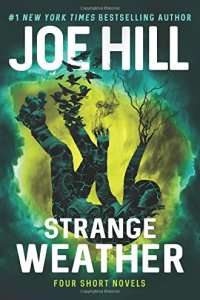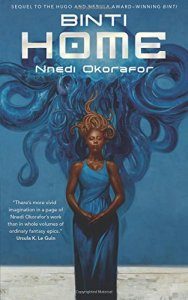Gary K. Wolfe reviews Graham Joyce
 Back in June I noted how, derived from an incident in his childhood, Neil Gaiman’s The Ocean at the End of the Lane is the most personal of his novels, and something similar might be said of Graham Joyce’s The Year of the Ladybird, derived from an episode during his college years of working at a fading seaside resort. Of course, Joyce has drawn on autobiographical material before – his colorful aunts supposedly provided the models for some of the main characters in The Facts of Life – though usually transforming the material with a good deal more material fantasy than is evident in the current novel, where it’s largely confined to a medium who may not be as fake as she seems and two ghostly figures who haunt the narrator. The real meaning of those figures turns out to be a several shades darker than we might first suspect from a novel whose initial tone is that of a sunny coming-of-age romantic comedy. A couple of elements that may seem fantastical, such as the record-smashing heat wave and the locust-like plague of millions of ladybirds, turn out to be well-documented actual events from the summer of 1976, when the novel takes place. As is often the case with Joyce, we come to realize that some events which seem fantastical aren’t, and some events which seem real turn out fantastical.
Back in June I noted how, derived from an incident in his childhood, Neil Gaiman’s The Ocean at the End of the Lane is the most personal of his novels, and something similar might be said of Graham Joyce’s The Year of the Ladybird, derived from an episode during his college years of working at a fading seaside resort. Of course, Joyce has drawn on autobiographical material before – his colorful aunts supposedly provided the models for some of the main characters in The Facts of Life – though usually transforming the material with a good deal more material fantasy than is evident in the current novel, where it’s largely confined to a medium who may not be as fake as she seems and two ghostly figures who haunt the narrator. The real meaning of those figures turns out to be a several shades darker than we might first suspect from a novel whose initial tone is that of a sunny coming-of-age romantic comedy. A couple of elements that may seem fantastical, such as the record-smashing heat wave and the locust-like plague of millions of ladybirds, turn out to be well-documented actual events from the summer of 1976, when the novel takes place. As is often the case with Joyce, we come to realize that some events which seem fantastical aren’t, and some events which seem real turn out fantastical.
But there’s another, somewhat less personal kind of history at work in several of Joyce’s recent novels, and it has to do with the last few decades of social and cultural shifts in England. The Facts of Life began in postwar Coventry, when wartime ghosts could still come knocking at your door and the culture was largely one of rebuilding. By The Limits of Enchantment, we had moved into the 1960s, when everything from National Health regulations to hippies, Carnaby Street, and the Beatles had begun to affect the lives of remote Midlands villagers. Now we find ourselves in 1976 in the remote summer-vacation village of Skegness, which is already suffering a decline because of the rise of cheap air travel to the continent and showing strains between the more tradition-minded parents and the kids losing patience with the corny games and vaudeville-style theatricals. The narrator, David Barwise, taking a summer job here between terms studying English literature at university, befriends a gorgeous and talented singer working as a cleaning lady, whose surly, seething husband seems to take a liking to David. He invites him along to what turns out to be a meeting of a local chapter of the National Front, the scary right-wing racist movement that actually gained some limited traction in the 1970s. Rather abruptly, the novel takes on a more ominous tone, and even the piles of ladybirds begin to seem more apocalyptic and less a comedic diversion.
This carefully modulated shift in tone, along with Joyce’s characteristically shapely prose, is what finally makes the novel work and belies its surface sheen as a light, nostalgic break from the ruminative poetics of Some Kind of Fairy Tale. David isn’t taking this summer job on a lark, or even simply to avoid the summer work proffered by his resented stepfather Ken. He carries with him a faded photo of his long-dead biological father – the only one he has been able to find – with ‘‘Skegness’’ scrawled on the back, and he hopes to find some sense of what really happened to his dad. Though he is initially distracted by the colorfully shabby cast of characters he meets – the cigar-wielding entertainment director Pinky, the sexy dancer Nikki, the magician Tony who bills himself as Abdul-Shazam, the fake fortune-teller Madame Rosa, the other ‘‘greencoats’’ who wrangle the tourist activities, and of course the violent racist Colin and his abused wife Terri – and by a couple of romantic entanglements, David eventually learns more than he really wants to know. Caught between a dark secret in his own past and his unpredictable future after college, David is a likeable and decent figure who also seems appropriate for an England during an uncomfortable period of transition. While he may not carry the mythic resonance of a liminal figure like Tara in Some Kind of Fairytale, he doesn’t need to and probably shouldn’t: what fantasy there is here is far more personal. What begins with the nostalgic glow of a hot 1970s summer ends up grounded by the shadows of real history, and, shapely and magical as the novel is, it’s not really in the end a fantasy, at least in the sense of Some Kind of Fairy Tale. Does that matter?







